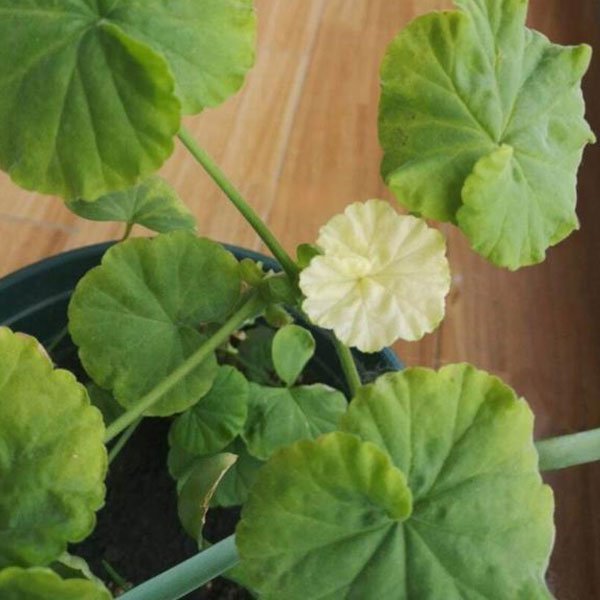Understanding and Addressing Geranium Leaves Turning White
Introduction
Geranium leaves turning white could stem from several sources. For example, nutrient deficiencies, pathogens, pests, and even environmental stress. We will provide science-backed strategies to diagnose and treat your plants.
Why Are My Geranium Leaves Turning White?
Fungal Infections
Fungal infections are a prevalent affliction for many plants, geraniums included. One of the most notable diseases that can cause white spots on the leaves is powdery mildew.
You can identify it by telltale white, powdery spots on the leaf's surface. This infection thrives in poor air circulation and high humidity conditions. It can often occur around indoor plants or during wet seasons.
Pests
Spider mites are minuscule arachnids that feast on plant juices. They leave behind stippling that manifests as white or yellow spots on the leaves.
Another dead giveaway for spider mite infestations is the fine webbing the pests leave behind. They move from plant to plant, often causing widespread damage. These tiny terrors are a common threat in dry, dusty conditions. This often peaks in numbers during the hotter seasons.
Nutrient Deficiencies
Plants also require a balanced diet to thrive. Iron or magnesium are essential for chlorophyll production. A lack of them can result in a condition known as chlorosis. The leaves lose their green pigmentation and turn white or yellow.
Diagnosing the Issue
Observe the Leaves
Take a good, long look at the leaves. Are they uniformly white? Are the edges of the leaf also turning brown or crispy? Are there any other spots or lesions present? Noting these details can help narrow down the possible causes.
Fungal infections often start on the underside of the leaves as small, almost unnoticeable specks. As they progress, the white dust of powdery mildew or the spreading splotches of other fungal diseases become more evident.
Look for Organisms
Pests are tricky to spot with the naked eye. For example, spider mites. Using a magnifying glass, inspect the leaves and stems for any signs of movement or webbing. Ensure you check the plant thoroughly. Because spider mites are notorious for wreaking havoc unnoticed until it's almost too late.
Review Care and Environment
Take stock of recent watering habits, the plant’s location, exposure to the sun, and any changes in general care. Some issues can stress the plant. For example, overwatering, underwatering, or drastic changes in sunlight. You geranium will be more susceptible to disease.
Soil and Nutrient Analysis
Perform a soil test to assess the nutrient levels available to your plant. You can collect soil samples. Send them to a lab for a comprehensive analysis. Often, local gardening centers can provide this service.
If iron or magnesium deficiencies are the culprits, you may notice that the foliage between the veins is turning white, while the veins themselves remain green.

Remedying White Geranium Leaves
Treating Fungal Infections
Manage the environmental factors that promote fungi. For example, ensuring adequate space between plants, good air circulation, and reducing humidity. Pruning affected areas can help control the spread of the infection. Fungicides, both organic and chemical, are also available for serious cases.
Pests
An effective method for combating spider mites is a forceful water spray. Physically dislodges them from the plant. Introduce natural predators like ladybugs, or use insecticidal soaps to control their population.
Neem oil, an organic pesticide, can also be a deterrent. For more aggressive infestations, consider insecticidal soaps or miticides.
Nutrient Deficiencies
Addressing nutrient deficiencies involves adjusting the pH of the soil and applying the necessary fertilizers. For magnesium deficiencies, Epsom salts can be a quick fix when you apply in a diluted solution to the soil around the plant. Iron deficiencies may require a chelated iron supplement, available at most nurseries.
General Strategic Plant Care
Soil Management
Regularly amend the soil with organic matter to improve its structure and fertility. Use compost to provide a nutrient-rich environment. Be sure to follow the product instructions to avoid over-fertilization.
Pruning and Sanitization
Regularly prune your plants to improve airflow and remove damaged or diseased plant material. Be sure to sanitize your tools between cuts to prevent the spread of diseases.
Integrated Pest Management (IPM)
Adopt an IPM approach which combines biological, cultural, physical, and chemical control strategies. It can minimize economic, environmental, and health risks while controlling pests.
Making Adjustments
As the seasons change, so do the needs of your plants. Adjusting watering schedules or changing the location of your geraniums. Additionally, a consistent fertilization schedule will help maintain its health and resilience.
Environmental Stress
Too much or too little light and fluctuations in temperature can all stress your geraniums. This may lead to geranium leaves turning white. Ensure they're getting the right amount of bright, indirect light, a consistent temperature.
Conclusion
Why do geranium leaves turn white? By taking these steps, you can often reverse the white leaves and restore your geraniums to their vibrant green.

